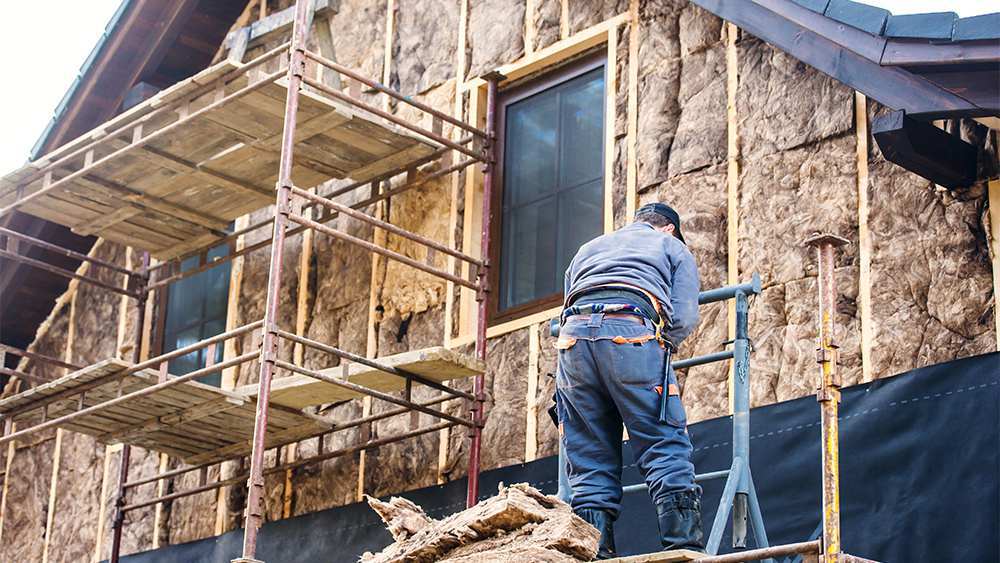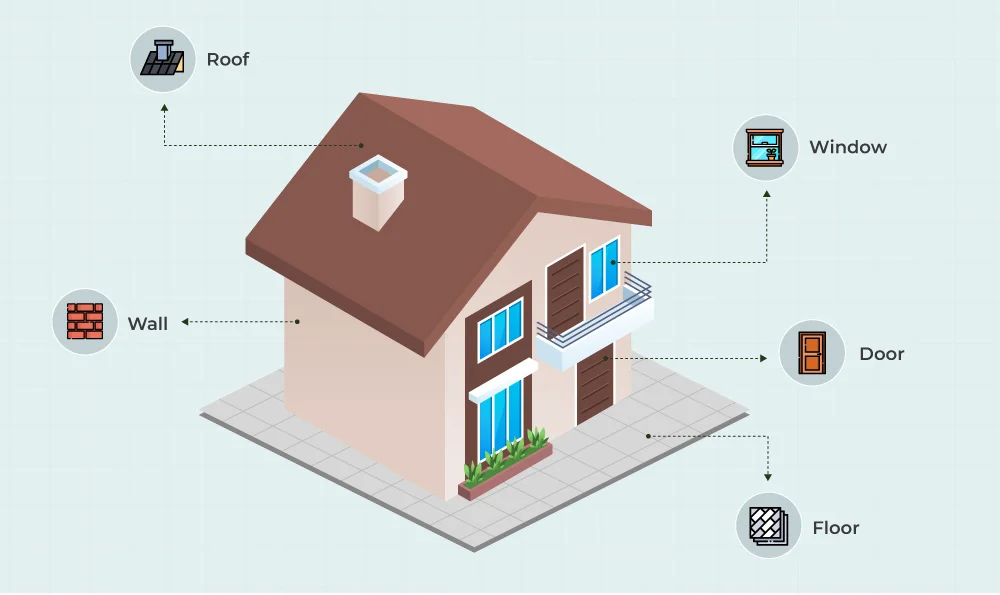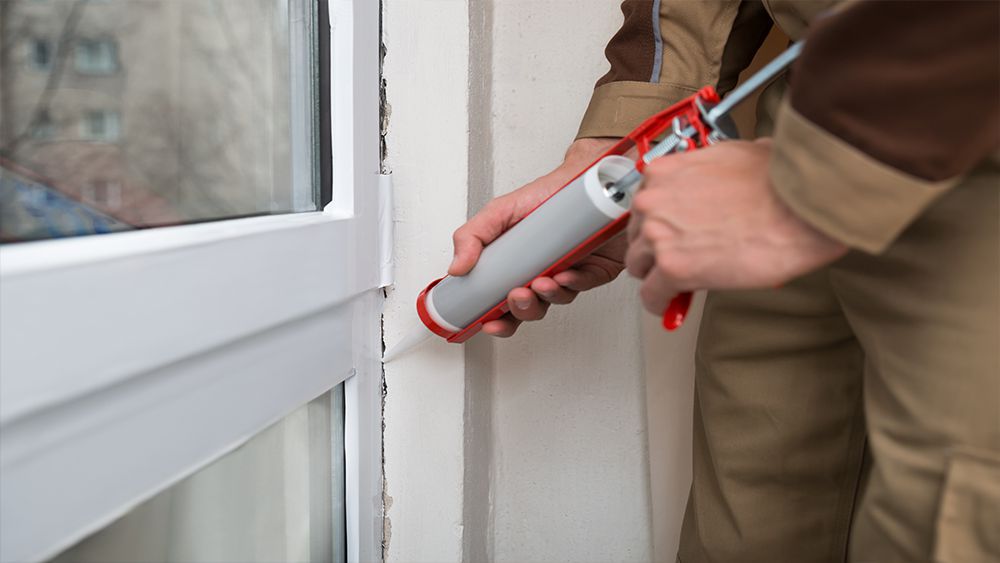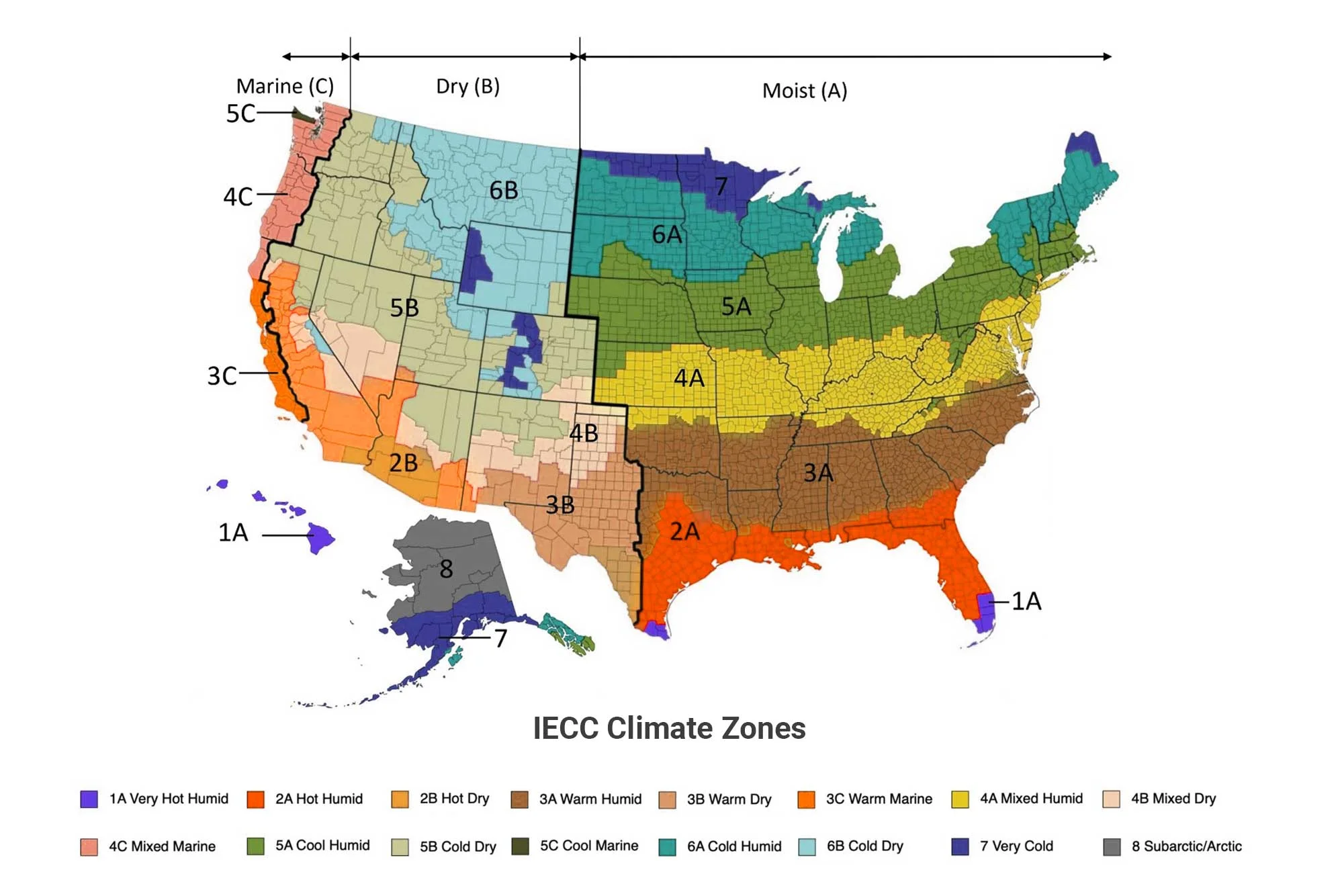
Key Takeaways
- Home insulation reduces heat transfer, resulting in low energy bills.
- The R value measures insulation’s ability to resist heat flow with higher R values offering better thermal resistance.
- Insulating key areas like attics, walls, and windows reduces heat loss and improves comfort.
Are you finding it hard to keep your home at the perfect temperature while watching your energy bills climb each season? Proper home insulation might seem like a daunting task, but it’s the key to solving many heating and cooling challenges.
While many homeowners have a basic understanding of insulation, few know enough to ensure their home is effectively insulated for maximum comfort and efficiency.
If you’re ready to take control of your home’s climate and energy usage, this comprehensive guide to home insulation covers everything you need to know to get started.
Why Do You Need Home Insulation?
Through various mechanisms, heat flows from warmer areas to cooler areas until there is no longer a temperature difference. During winter, heat flows from all heated areas to unheated areas such as attics, garages, bathrooms, and even outdoors if gaps and crevices surround windows and doors. This means your heating system works harder than it has to, contributing to higher energy usage.
The opposite happens in the summer months. Heat flows from the warmer outdoors to the cooler indoors, which hinders your air conditioning.
Here is how home insulation can help! Properly insulating your home will reduce this unwanted heat transfer, additionally making your HVAC unit’s job a whole lot easier!
There are many different types of insulation suitable for various purposes. Some of the most common types of insulation include blanket batts and rolls, rigid foam boards, loose-fill insulation, spray foam insulation, etc.
How Does Home Insulation Affect Your Energy Costs?
According to the US Department of Energy, 43% of a utility bill goes to heating and cooling for a typical home. Due to air exchange, this percentage can increase, leaving a dent in your wallet.
However, by installing insulation, you can drastically reduce heat transfer. A properly insulated home leaves no space for the air to leak hence maintaining your perfect home environment. Your HVAC system will no longer need to work overtime to heat or cool your home. Since your home is not losing conditioned air to unconditioned spaces, you’ll see a significant reduction in energy bills and a better, more comfortable home environment.
Your best choice to make any mini-split, window,
or portable AC smart. Enhance your comfort and savings.

All About Insulation R-Value
The R-value measures the ability of a material to resist heat flow. The higher the R-value of a material, the better an insulator it is. It helps differentiate between insulating materials depending on their thermal resistance.
The R-value depends on several factors, including the type of insulation material, its thickness, density, and age. Generally, increased insulation thickness will increase the R-value. You can refer to the table below to find the recommended R-values for your climate

Where to Insulate in Your Home?

There are many avenues of air leaks inside your home. Let’s go over some of the most important areas that need insulation for better temperature control.
1. Attic and Roof Insulation
The sun’s harsh rays fall directly on the roof during summer, raising its temperature to astronomical levels. The hot roof radiates heat, which travels to the attic. If you are using your attic as a living space or storage room for heat-sensitive equipment, this can create a massive problem.
Even if your attic is unused, it likely contains exposed wires, ducts, and pipes, which can degrade in the presence of heat. An uninsulated roof and attic can also raise the temperature of your entire house, creating discomfort and sky-high bills.
Here attic and roof insulation come to your rescue. According to the EPA, homeowners can save 15% on heating and cooling costs by effectively insulating attics, floors over crawlspaces, and accessible basement rim joists.
For DIY attic insulation, blanket and loose-fill options are the easiest. Place blanket insulation in joists, starting at the walls and working inward, or use loose-fill to fill gaps while keeping vents uninsulated. For finished attics or complex areas, consulting a professional is recommended.
2. Exterior Wall Insulation

Wall insulation has many advantages. It is one of the best steps you can take to make your home more energy-efficient and prolong its life. Exterior wall insulation can help protect your house from extreme temperature changes. This helps lower energy consumption, which is also great for the environment!
Some types of wall insulation can also lengthen the lifespan of your house by preventing mold growth. Effective wall insulation is seen as a sign of a well-built home and also increases its resale value.
Insulating Exposed Exterior Cavities:
If you are in the process of building your home, chances are your exterior wall cavities are exposed. If that is the case, here are some available options for insulating your exterior walls:
- Foam Board Insulation: Foam boards are an easy-to-install insulation option with good thermal resistance and relatively little thickness. They also prevent heat conduction through structural elements like wood studs.
- Batt and Roll Insulation: Batt and roll insulation, otherwise known as blanket insulation, comes in various materials, including fiberglass, mineral wool, sheep’s wool, etc. Fiberglass is the most used material, and a 3.5-inch-thick blanket offers an impressive R-value of 11. Batts and rolls are available in pre-cut sizes and, hence, are well-suited for a DIY wall insulation project.
- Concrete Block Insulation: Concrete blocks used to build homes are insulated by filling the core or coating the exterior with insulation.
- Insulated Concrete Forms: Insulating concrete forms are structures in which concrete is poured. They remain in place even after the system is built to provide insulation. They help save up to 20 to 25% on energy and offer noise control too.
- Radiant Barriers: Radiant barriers are also a good option if you have exposed exterior cavities. They are highly effective at preventing heat transfer by reflecting incoming light.
- Structural Insulated Panels: These are a building system in which an insulating core is sandwiched between two layers of structural board. SIP-built houses provide superior insulation compared to traditional building materials.
If you’re just getting started with constructing your home, it’s a good idea to talk to your contractor to determine whether SIPs would be a good fit.
Enclosed External Cavities:
If your structure is ready and you are looking to upgrade your insulation, here are some of your options:
- Blown-in Insulation: Blown-in insulation consists of tiny particles of fiber, foam, or other insulating materials. They can fit in any space without disturbing existing structures, making them viable for enclosed wall cavities.
- Spray Foam Insulation: Spray foam insulation is a good option for existing walls since it requires no significant changes to the structure. Installation requires special equipment and is best done by a professional.
3. Interior Wall Insulation
Though insulating interior walls is not a must, it provides energy savings by preventing heat transfer between rooms. In areas such as bathrooms, it can also prevent moisture from condensing on your walls. Interior walls that separate individual living spaces are often insulated with fire-rated insulation to prevent the spread of fire from one side of the wall to the other.
- If you have not started construction yet, consider using insulated concrete forms, concrete block insulation, or structural insulated panels.
- If you are in the process of constructing your house and have exposed wall cavities, you can consider foam board insulation or batt and roll insulation.
- Spray foam insulation or blown-in insulation are non-invasive alternatives when your home is ready and you do not wish to make extensive changes to the existing structure.
4. Floor Insulation

During winter, an uninsulated floor allows cold air to enter your home from the underground. As a result, your heater must run for longer to adequately heat your home, leading to high energy costs. For an average home, approximately 10% of heat loss is through the floor.
However, not everyone needs floor insulation. Older houses with suspended floors and those with a crawlspace underneath require it the most.
Here are some easy ways you can insulate your floor:
- Draught-Proofing: Caulk is a flexible material, and you can use it to seal air leaks through small cracks or gaps. Use caulk to fill the gaps between floorboards to prevent cold draughts.
- Foam Board Insulation: You can use foam boards to insulate underneath your floor covering. Foam boards are a good option for DIY insulation projects.
- Rugs: If you don’t wish to spend a lot of time or money on insulating your floor but walking barefoot makes you feel chilly, throwing on a rug will help keep your feet warm and add a layer of protection against heat loss.
- Radiant Barriers: Radiant barriers reduce heat loss downwards. Radiant barriers are installed below the floorboards, facing upwards.
- Underfloor Insulation: Underfloor insulation helps reduce cold draughts in homes raised above ground level. If you have access to the crawlspace underneath your floor, you can insulate beneath the floorboards for optimum results.
- Blown-in Insulation: If accessibility is an issue, you can use blown-in insulation.
5. Crawl Space Insulation

A crawl space is a narrow, unoccupied space between the ground and the first floor. Once a popular construction option, crawl spaces have lost popularity as people realize they have all the drawbacks of a basement with no functionality.
While crawl spaces offer easy access to ducts and pipes, homes with crawl spaces are highly prone to moisture-related problems such as mold growth, termites, and structural damage.
Corinne Segura, a Building Biologist Practitioner and owner of My Chemical-Free House, states, “Insulation can also help prevent mold in many cases. If, for example, you don’t have insulation and air sealing underneath a house that is in a hot, humid climate, humid outside air will make its way through the floor system and condensate on the cold underlayment when AC is used inside.”
Here are some steps you can take to insulate your crawl space and protect your home from water damage:
- Seal Air Vents: Conventional wisdom says ventilating crawl spaces should prevent moisture issues. However, warm air coming into your crawlspace can worsen mold growth by increasing moisture levels during summer. Therefore, experts are increasingly recognizing that unventilated crawl spaces are only better for homeowners using proper moisture control methods.
- Insulate Rim Joists: Closed-cell spray foam offers good moisture resistance. Use it to insulate rim joists.
- Insulate Crawl Space Walls: Rigid foam boards are the most suitable option for crawl space walls because they don’t trap moisture.
- Install a Vapor Barrier: Moisture in the ground evaporates and condenses on cold walls, creating the perfect environment for mold. A polyethylene plastic vapor barrier covering the ground can keep moisture at bay.
6. Window Insulation

Window insulation is an often overlooked part of home insulation; however, it plays the most significant role in your home’s energy efficiency.
Approximately 30% of a home’s heating energy is lost through windows. In summer, about 76% of the sunlight that falls on a standard window becomes heat.
Therefore, it is essential to insulate your windows. It can reduce heat transfer between your house and the outside environment, leading to significant energy savings.
Here are a few steps that you can take:
- Caulk Windows: Caulk and re-caulk any holes and places where the caulking has worn off to seal windows and prevent draughts.
- Weather Strips: Foam weather strips are an easy and inexpensive way to seal windows. They have an adhesive backing, and you only need to cut them to size and paste them wherever you wish.
- Blinds: Vertical or horizontal blinds are highly effective at reducing summer heat gain.
- Curtain and Drapes: During winter, most draperies can reduce heat loss by up to 10%. During summers, medium-colored draperies with white plastic backings can reduce heat gain by up to 33%, leading to substantial energy savings.
- Window Films: Window films protect against solar heat gain and ultraviolet exposure. They are ideal for climates with hot and long summers.
- Exterior Shutter and Shades: Exterior shutters and shades are installed outside windows to reduce solar heat gain. Like window films, they are better suited for sweltering climates.
- Window Awnings: Awnings are roof-like attachments installed on the building exterior to protect windows from the sun’s glare. Window awnings can reduce solar heat gain on west-facing windows by a whopping 77%.
7. Door Insulation

A leaky door can increase energy bills by letting conditioned air outside and vice versa.
Sealing air leaks in your doors can reduce energy costs and make your living space more comfortable. For optimum performance, insulate the door itself and the door frame.
- Caulking: Check for gaps and cracks around the door, remove the previous caulk with a utility knife, and re-caulk all affected areas.
- Weatherstripping: Cut the strip down to size and attach it to each side of the door so it sits even with the closed door.
- Door Sweep: Install a door sweep to the bottom of the door to seal the gap between the door and the threshold.
8. Duct Insulation
If you own a central HVAC system, you must have a network of ducts running through your home to supply the conditioned air.
Poor insulation or duct leaks can lead to loss of conditioned air, adding hundreds to your electricity bill. Experts estimate that about 20 to 30% of the air that moves through ducts is lost due to leaks. Sealing and insulating ducts can conserve energy and reduce your AC costs.
Installing New Duct Systems:
Even well-sealed and insulated ducts will leak some air. As a result, many new homes are being built with ducts installed in spaces falling under the home’s air and thermal boundaries. This helps prevent the loss of conditioned air and helps save up to 15% on cooling costs.
Ducts in unconditioned spaces can lead to moisture problems, air quality issues, and, of course, high energy bills. If you have really old ductwork, it’s a good idea to opt for modern, more energy-efficient replacements.
Insulating Existing Systems:
If your ducts run through unconditioned spaces such as attics or crawlspaces, you can use mastic to seal any leaks or holes. Make sure to seal the connections where vents meet floors, walls, or ceiling.
You can also insulate your ducts with foil-faced fiberglass insulation. Cut the insulation to size with a utility knife and wrap it around the duct. Close the joint with short strips of foil tape and then apply a long strip of foil tape around it.
Preformed duct insulation is another easy option. You only need to disconnect the duct to expose one end and slip the preformed insulation on.
9. Garage Insulation

Many homeowners neglect to insulate their garages, considering it unnecessary. However, weatherizing your garage can have notable benefits, especially if you plan to use it as a home office or home gym.
- Ceiling Insulation: Use R-38 insulation for effective energy retention and secure the insulation between joists carefully.
- Garage Door Insulation: Secure insulation with retainer pins. For hot regions, consider rigid boards with reflective foil. Ensure proper weather stripping for added efficiency.
- Wall Insulation: Use R-13 to R-15 fiberglass insulation. Seal all gaps and cracks with sealant before installation. For additional protection, cover the insulation with a vapor barrier.
- Floor Insulation: Lay a vapor barrier to prevent moisture. Install rigid foam insulation over the vapor barrier. Cover with plywood sheets, leaving gaps for seasonal expansion.
10. Basement Insulation

Basements are often the coldest part of a home since hot air rises while cold air sinks.
Best Insulation Types for Basements:
Since basements are susceptible to water damage, make sure it does not trap moisture when installing insulation. Examples of suitable basement insulation include:
- Expanded Polystyrene (EPS) Foam Board
- Extruded Polystyrene (XPS) Foam Board
- Polyisocyanurate Foam Board
All three types of insulation mentioned above are suitable for basements because they do not trap moisture. However, builders avoid using XPS because it is made with a blowing agent with a high global warming potential. For ideal insulation, make sure you also insulate the rim joists with spray foam insulation.
When insulating with rigid foam, you must separate the foam from the living space by installing ½ inch drywall or another material that is equivalent in fire resistance to ½ inch drywall.
Benefits of Home Insulation
Home insulation has numerous benefits that make it a necessity for homeowners:
1. Increased Comfort
Home insulation maintains the ideal temperature settings inside your house for both winters and summers by reducing heat transfer. You no longer have to deal with cold draughts in the winter or a burning home in the summer.
2. Lower Electricity Bills
By reducing heat transfer, home insulation also decreases the amount of time your HVAC unit must run. Your unit can run at lower power for a lesser time and still maintain your ideal temperature, resulting in a change in your electricity bills.
3. Better Resale Value
Well-installed home insulation is a sign of a high-quality house. You improve your house’s resale value by opting for insulation. Prospective buyers are typically willing to offer more for an energy-efficient house.
4. Environmental Benefits
According to one scientific study, properly insulating every home in the United States would result in 190,000 fewer tons of Sulphur dioxide. Furthermore, 100,000 fewer tons of nitrous oxide and 3100 fewer tons of fine particulate matter 2.5.
5. Health Benefits
The same study found that reducing these harmful emissions is associated with 240 fewer deaths, 6500 fewer asthma attacks, and 110,000 fewer sick days.
Complementing Home Insulation With Other Energy-Saving Measures
While home insulation is undoubtedly valuable, it is only the first step towards an energy-efficient home. For maximum savings, you should supplement your insulation with other energy-saving measures. Here, a smart thermostat for central HVAC or a smart mini-split thermostat can be indispensable.
These smart devices ensure that your HVAC is never running when it doesn’t need to by using features such as scheduling and geofencing. You can also track your energy usage and make relevant changes to save on bills. Moreover, some smart thermostats provide air filter cleanliness alerts that help your unit perform better and utilize less energy. This can also prolong the lifespan of your AC unit.
The Takeaway
Proper home insulation is one of the most effective ways to enhance comfort, save energy, and lower utility costs. By reducing heat transfer, insulation helps maintain a consistent indoor temperature year-round, cutting down on the need for excessive heating or cooling. Whether you’re sealing air leaks, upgrading attic insulation, or insulating your windows, each step contributes to a more sustainable and cost-effective home. Beyond savings, proper insulation also promotes a quieter and healthier living environment by reducing noise and minimizing drafts. Investing in insulation not only benefits your home but also the planet, making it a smart choice for the long term.










8 Comments. Leave new
My wife and I spent a lot of money on energy bills during the summer, and we think it’ll happen again when the cold starts creeping into our house. That’s why we’re very interested in what you mentioned about reducing our energy use by insulating our home, so we’ll look into it.
My wife and I started using our air conditioner a few months ago, and our energy bills are incredibly high for the amount of time that we use it, so we think something’s wrong. It’s interesting to know how insulating a house helps us reduce our energy use by keeping the cool or hot temperature inside our home, so we’ll start looking for a specialist to help us out. Thanks!
My wife and I want to invest in an air conditioner, but we’ve heard how it won’t do much without proper insulation, so we’ll look into it right now. We appreciate your insight on how we could stabilize our house’s temperature with the help of insulation.
We are gutting some areas of our house to do some remodeling and I’ve been wondering if there’s anything else we should do while we’re tearing down some of the walls. I’ll be sure to add insulation to the list so we can see some of these benefits for our home.
Insulation is surely the best way to have a cool environment in your home. My uncle told me that he hoped to find a reliable service that could help keep their home cool and avoid high utility bills, and he asked me if I had any idea what could be the best option. Next time I’m going to have a discussion on insulation with him.
It’s good to know that home insulation can help your HVAC run for shorter amounts of time and save you money. I live in a really old home that has pretty bad insulation.
Roof insulation can help homeowners save about 15% of energy on heating and cooling. With that in mind, I will make sure to invest in this aspect of my future home when I hire contractors next year. It will be a great investment to pick the best option if it can really save me money in the long run.
Thanks for pointing out that insulation can solve heating and cooling problems with adequate application. My husband and I want to ensure a comfortable environment for our five kids. With this, we will look for experts on Monday who can provide insulation to our two-story house using high-quality materials.